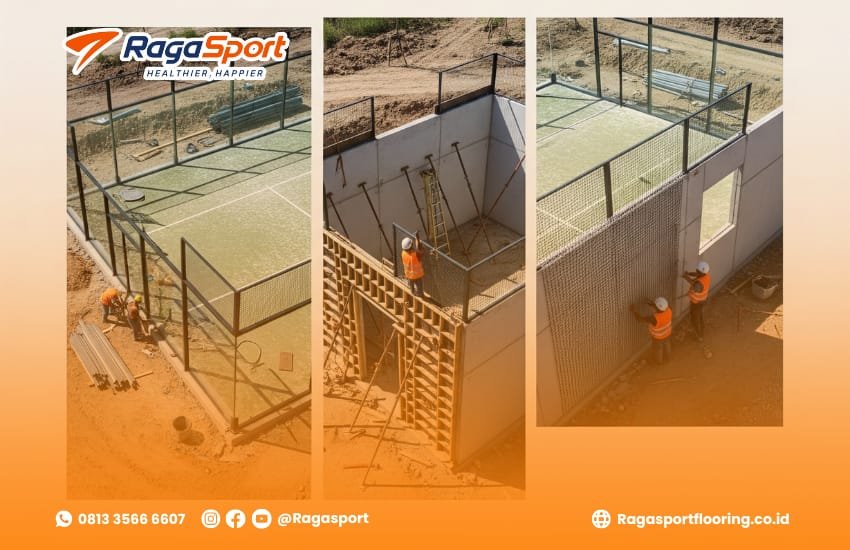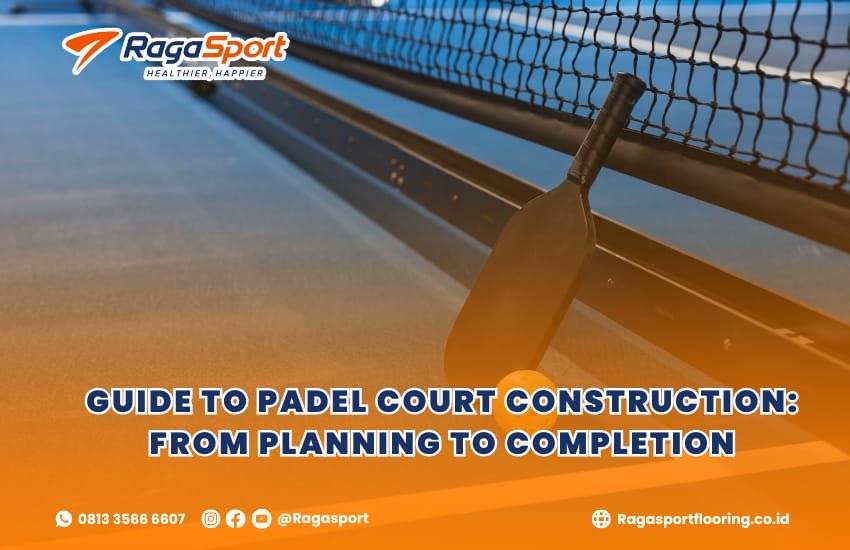In recent years, padel has emerged as one of the fastest-growing racket sports worldwide. Combining the excitement of tennis with the strategy of squash, padel offers a fun, competitive experience suitable for all ages and skill levels. With its growing popularity, demand for professional padel court construction has skyrocketed.
Whether you’re planning to build a padel court for a sports center, school, hotel, or private use, understanding the construction process is essential to ensure a safe, durable, and regulation-compliant facility. This article will walk you through the complete guide to building a padel court—from initial planning and materials to structural standards and finishing touches.
Table of Contents
What Is a Padel Court?
A padel court is smaller than a tennis court and fully enclosed with walls made of glass and mesh fencing. The standard dimensions are 20 meters by 10 meters, and the sport is typically played in doubles (2 vs 2). The court’s walls are not just for aesthetics—they’re part of the game, allowing the ball to bounce and create dynamic rallies.
Because of its unique structure, padel court construction requires careful design, premium materials, and technical expertise.
Step-by-Step Padel Court Construction Process

Below are the key stages involved in building a padel court:
1. Site Analysis
Every great court begins with a solid foundation. A site survey helps assess:
- Land contour and soil quality
- Sunlight orientation
- Drainage capability
- Accessibility for materials and equipment
- Wind and weather exposure
A level, stable area with good drainage is ideal for padel court construction. Any slope or uneven ground may require excavation or reinforced foundations.
2. Design & Planning
Designing your court involves more than just drawing lines. The court plan should include:
- Official dimensions: 20m x 10m
- Glass back walls and side fencing (3–4 meters high)
- Lighting layout for night games
- Flooring material selection (e.g., artificial turf, acrylic, or interlocking tiles)
- Drainage system to prevent water accumulation
A professional contractor will typically provide detailed blueprints or 3D mockups during this phase.
3. Structural Foundation & Base Work
The next stage includes:
- Ground leveling and excavation
- Pouring a concrete slab foundation with adequate slope for water runoff
- Installing an underground drainage system
- Anchoring metal poles for fencing, lighting, and glass panels
The quality of your foundation directly affects the durability and safety of the court.
4. Floor Installation
The flooring of a padel court can vary depending on its use (indoor vs. outdoor) and your budget. Common options include:
- Artificial turf: Soft, comfortable, great for joint protection
- Interlocking tiles: Modular, weather-resistant, easy to maintain
- Acrylic surface: Applied over concrete, slip-resistant, used in professional settings
The choice of surface can influence playability and injury prevention.
5. Glass and Fence Installation
A signature feature of padel courts is the use of tempered glass panels, typically 10–12 mm thick, forming the back and partial side walls. These must be:
- Impact-resistant
- Transparent for spectator visibility
- Installed with sturdy steel frames
The remaining perimeter is enclosed with galvanized wire mesh fencing to keep the ball in play and ensure safety.
6. Lighting and Electrical Work
LED lighting is installed on poles around the court. A standard court requires 4–6 light poles, each equipped with energy-efficient LED floodlights. Proper lighting ensures optimal visibility for evening games without glare or shadows.
7. Final Checks & Play Test
Before the court is officially handed over, the contractor should perform a full functionality test, including:
- Surface flatness and bounce consistency
- Line markings according to official rules
- Secure installation of glass panels and fencing
- Drainage test
Ideally, the court should be play-tested to confirm quality.
Padel Court Construction Standards

To ensure safety, consistency, and international playability, padel courts must comply with the following standards:
- Dimensions: 20m x 10m
- Wall height: 3m (sides), 4m (back)
- Lighting intensity: Minimum 400 lux for recreational use; 500–750 lux for competitions
- Material safety: Non-slip flooring, tempered glass, anti-corrosion fencing
- Net height: 88 cm at center, 92 cm at sides
Meeting these standards ensures your court is tournament-ready and future-proof.
Estimated Cost of Padel Court Construction
The total investment depends on:
- Flooring type and quality
- Type and thickness of glass walls
- Indoor or outdoor installation
- Location and accessibility
- Optional features like roofing, seating, and branding
In general, padel court construction ranges from $20,000 to $50,000 USD per court. Despite the cost, the return on investment (ROI) is substantial—especially for commercial sport centers and resorts.
Common Mistakes to Avoid
To ensure a successful build, avoid these common pitfalls:
- Choosing the cheapest contractor without checking quality or past projects
- Ignoring drainage in outdoor installations
- Improper lighting placement, causing shadows or glare
- Skipping permits and local building regulations
Working with an experienced contractor is crucial to avoiding costly mistakes.
Why Choose a Professional Padel Court Contractor?
A trusted contractor ensures:
✅ Engineering precision
✅ High-quality materials
✅ Regulation compliance
✅ Timely project delivery
✅ Post-installation maintenance and support
A professional will handle everything—from design and sourcing materials to installation and quality assurance.
CONCLUSION
Padel court construction is a high-value investment that requires expertise, precision, and quality craftsmanship. Whether you’re building one court or planning an entire padel facility, the success of your project depends on choosing the right design, materials, and contractor.
With growing interest in padel worldwide, building a regulation-standard padel court today could be your stepping stone to long-term business or sporting success.
Ready to Build Your Padel Court?

RagaSport is your trusted partner for professional padel court construction in Indonesia. We provide end-to-end solutions for sports facility construction—from planning and design to installation and maintenance.
✅ Certified materials & standards
✅ Experienced engineering team
✅ Modern design with 3D simulations
✅ Trusted by institutions, schools & private clients
🌐 Visit our website: ragasport.com/padel-court-construction-services/
📲 Contact us via WhatsApp: wa.me/6281335666607

